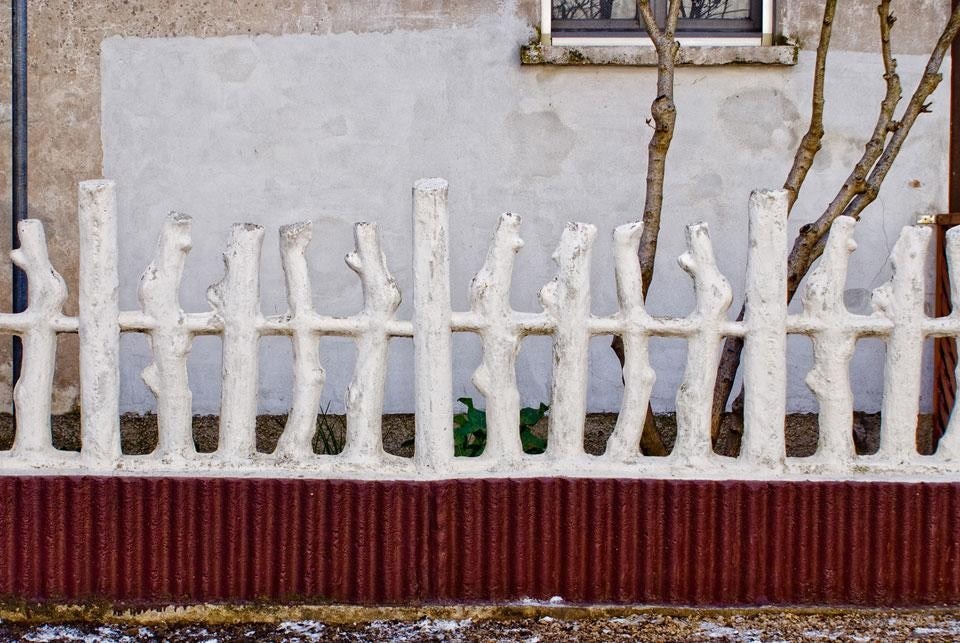If one adopts the gaze of the tourist, it seems that the only monuments that can be photographed along the streets of these anti-cities are the fences which reveal the owner's aesthetic sense and serve as an interface between the dwelling and the outside world, screening and protecting (often visually, almost always purely psychologically) family life.
What unfolds is a multifaceted and multi-material carousel of "façades." Among the more exuberant images are those dating from the 1960s and 70s, when precast concrete became the material of choice for mimicking branches, logs, pebbles and for reproducing baroque balustrades. Unexpected (unwitting?) citations of Wright's textile blocks abound, as do clear allusions to Carlo Scarpa's concrete walls.
A suspiciously somber brick wall is an unusual exception; a closer look reveals a plaster Disney sculpture watching over the street with false nonchalance from one of the square openings.
The endless sequence of good things in terrible taste shows how kitsch can contain strong affective value, which, however, is worn out within the limits of the individual domain. Indeed, it is this paradox that triggers the leap from the local dimension to the global scale. The almost portrait-like, alienating treatment of the enclosures seeks to give visibility to these anti-cities that are places for living but that lack of any sign of citizenship or community life.
Venturing into residential neighborhoods is like traveling to remote areas. Remote because frequented only by residents, but also because they are far less familiar than city centers, and often devoid of any spatial reference for the rare visitor.
In 1997, Richard Rogers wrote Cities for a Small Planet, denouncing the expanding model of suburban sprawl not only as a threat to what constitutes a city — namely, the presence of public space —, but as a phenomenon with unsustainable implications on the environment and individual health. Notwithstanding this, the privately-owned single-family house is still one of the most coveted status symbols in Italy, while the dense city — the historical nucleus — is silently weakened. Giacomo Magnani



